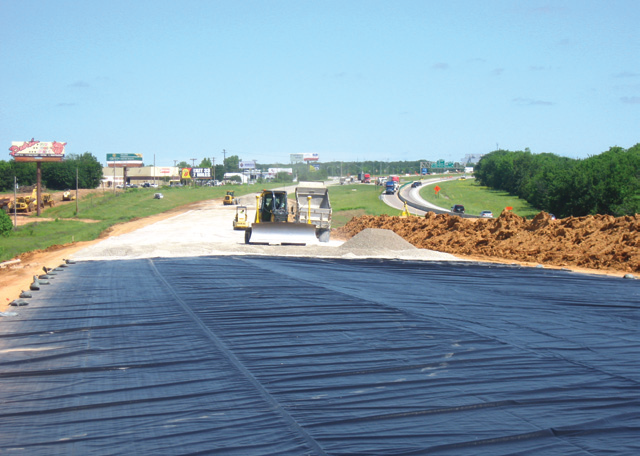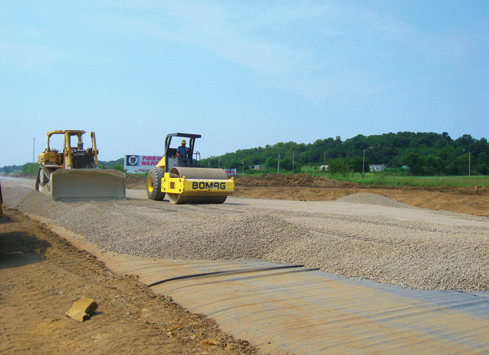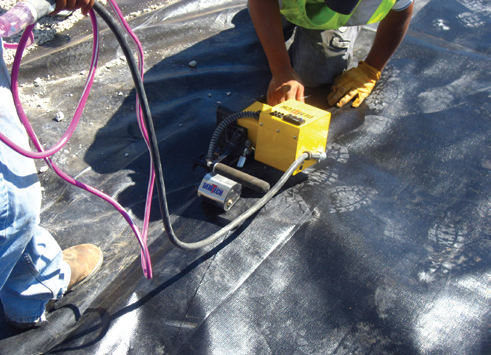
Interstate 35 (I-35) is a major highway that runs north-south from Laredo, Texas all the way up to Duluth, Minnesota (more than 1,550 miles). A seven-mile stretch of I-35 near Ardmore, Oklahoma is prone to undulations in the pavement owing to expansive clay beneath the road surface.
As the moisture content of the clay increases the clay tends to swell, which causes a non-homogenous expansion and contraction.
This area (known as the Ardmore basin) experiences frequent changes in moisture content depending on weather conditions and the situation is compounded by wild temperature variations between 0˚F in the winter (-18˚C) and 110˚F (43˚C) in the summer.
These undulations have a detrimental effect to the road surface and, as a consequence, I-35 has required several repairs in this area since its construction in the late 1960s.
A Geomembrane Solution

Because I-35 is a heavily travelled major roadway for both passenger vehicles and heavy trucks, the Oklahoma Department of Transportation was looking for a long term solution to maintain the problem soils that had necessitated multiple repairs over the years. The use of a moisture barrier, to control the swelling in the clay subgrade, was ultimately selected based on the principle that by shielding the clay, the geomembrane would minimize the opportunity for significant moisture changes in the pavement subgrade.
Intertape Polymer Group’s (IPG) Aquamaster® product line was selected. On the performance/data side, it exceeded the original specification; and for the project economics, it offered a number of cost advantages. It was selected as the project’s geomembrane because of its:
- Strength properties
- Water impermeability
- Lighter weight
- Portability
- Puncture resistance,
- Soil stabilization on slopes
- Cost savings
Benefits of Prefabrication

To maximize moisture control, the geomembrane was installed on a base of lime-stabilized subgrade and covered with a layer of crushed stone. Continuously reinforced concrete pavement with a drainable base were placed upon the crushed stone.
The geomembrane was delivered to the site in large, prefabricated panels (48 – 60 ft. wide and 200 ft. long). The total geomembrane area was approximately 630,000 sq. ft. The panels were heat seamed together to ensure a watertight membrane.
The use of prefabricated panels ultimately saved time and money. It reducing the number of seams that had to be welded in the field, which enable faster, more economical construction.
**
Intertape Polymer Group manufacturers the Aquamaster Geomembrane utilized on site.











